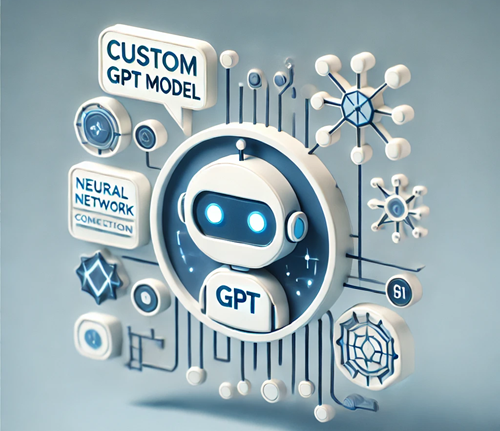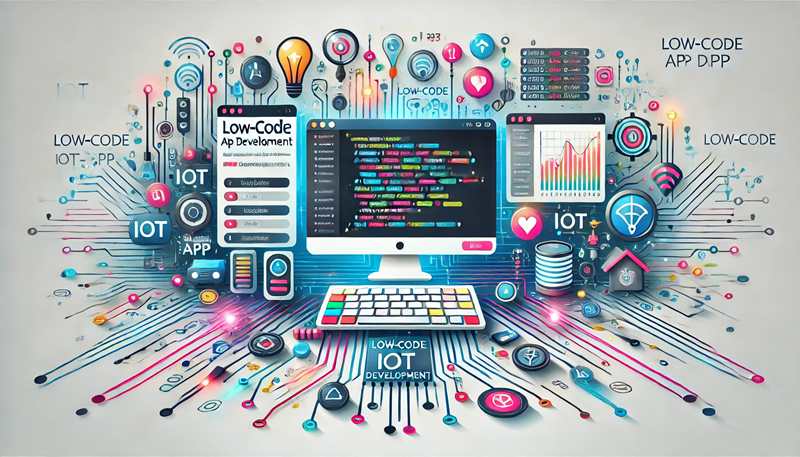The rapid advancement of the Internet of Things (IoT) is reshaping industries, enabling businesses to create connected solutions that enhance efficiency, improve customer experiences, and unlock new revenue streams. However, traditional IoT app development often involves complex coding and extended timelines, delaying implementation and innovation. Enter low-code IoT app development—a revolutionary approach that accelerates success by simplifying the creation of robust IoT solutions. In this blog, we explore how low-code IoT app development can drive quick success for businesses and industries.
What is Low-Code IoT App Development?
Low-code IoT app development leverages platforms with visual interfaces, drag-and-drop tools, and pre-built components, enabling developers to build IoT applications with minimal manual coding. This approach reduces development time and makes IoT app creation accessible to both technical and non-technical teams.
By enabling faster prototyping, seamless device integration, and real-time deployment, low-code platforms are democratizing IoT app development, allowing businesses to innovate at unprecedented speeds.
1. Accelerating Time-to-Market with Low-Code Platforms
In the competitive IoT landscape, speed is critical. Low-code platforms drastically reduce the time needed to design, test, and deploy IoT applications, enabling businesses to bring their products to market faster.
How Low-Code Speeds Up Development
Low-code platforms come with pre-built templates, device connectors, and customizable workflows that eliminate repetitive coding tasks. This streamlined process allows developers to focus on refining the app’s functionality and user experience rather than building it from scratch.
Real-World Example
A logistics company used a low-code platform to create an IoT-enabled fleet management app. The platform’s drag-and-drop tools and ready-to-use GPS integrations reduced development time from months to weeks, allowing the company to quickly improve route efficiency and reduce fuel costs.
2. Enhancing IoT Scalability and Flexibility
IoT applications often need to scale rapidly to accommodate more devices, data streams, or users. Low-code platforms are designed with scalability in mind, offering cloud integration and modular designs to handle growing IoT ecosystems.
Scalable Features
- Cloud-Native Architecture: Many low-code platforms integrate with cloud services, enabling seamless data storage, processing, and scalability.
- Edge Computing Compatibility: Low-code solutions often support edge devices, enabling data processing at the source for improved performance and reduced latency.
Business Impact
By using scalable low-code platforms, businesses can start small with minimal resources and expand their IoT solutions as demand grows, ensuring cost-effective scalability.
3. Simplifying Device Integration
IoT ecosystems include a wide variety of devices, sensors, and communication protocols. Integrating these components is often one of the most challenging aspects of IoT app development. Low-code platforms simplify this process by offering built-in connectors and standardized APIs.
Integration Advantages
- Device Agnosticism: Low-code platforms support multiple IoT protocols like MQTT, CoAP, and HTTP, ensuring compatibility with diverse devices.
- Plug-and-Play Connectivity: Pre-configured connectors streamline the integration of hardware and software components.
Example
A smart home company leveraged a low-code platform to develop an app that connected lighting, security, and HVAC systems. The platform’s pre-built device connectors allowed seamless integration, saving development time and resources.
4. Lowering Development Costs
Traditional IoT app development often involves significant investment in skilled developers, infrastructure, and testing. Low-code platforms reduce these costs by simplifying the development process and requiring fewer resources.
Cost-Saving Benefits
- Reduced Hiring Needs: Non-technical teams can contribute to app development, reducing the reliance on specialized developers.
- Faster Development Cycles: Shorter timelines translate to lower labor costs and quicker ROI.
Industry Insight
Startups and small businesses benefit the most from low-code platforms, as they can create robust IoT solutions without extensive budgets or technical expertise.
5. Ensuring Security and Compliance
IoT applications handle sensitive data, making security a top priority. Low-code platforms address this concern by incorporating built-in security features and compliance tools.
Security Features
- End-to-End Encryption: Protects data in transit and at rest.
- Role-Based Access Control: Ensures only authorized users can access specific app functionalities.
- Compliance Tools: Platforms offer frameworks for meeting GDPR, HIPAA, and other regulatory standards.
Example
A healthcare provider used a low-code platform to develop an IoT app for remote patient monitoring. The platform’s built-in HIPAA compliance tools ensured secure data handling and adherence to legal standards.
6. Empowering Citizen Developers
One of the standout features of low-code platforms is their ability to empower citizen developers—individuals with minimal coding experience—to participate in IoT app development. This democratization of development fosters innovation and accelerates project timelines.
Key Benefits
- Collaboration Across Teams: Marketing, operations, and IT teams can work together seamlessly on app development.
- Rapid Prototyping: Citizen developers can create prototypes to test ideas without waiting for extensive development cycles.
Impact on Innovation
By enabling more people to contribute, low-code platforms foster a culture of creativity and innovation, leading to faster and more diverse IoT solutions.
7. Driving Innovation Across Industries
Low-code IoT app development is transforming industries by enabling businesses to adapt to evolving needs and create value-driven solutions.
Examples of IoT Innovations
- Retail: Smart shelves and inventory management systems improve operational efficiency.
- Healthcare: IoT apps for wearable devices enhance patient care and monitoring.
- Manufacturing: Predictive maintenance systems reduce downtime and improve equipment reliability.
Future Potential
The adaptability and ease of low-code platforms position them as a key driver for innovation in sectors like smart cities, energy management, and autonomous vehicles.
Unlocking IoT Success with Low-Code Development
Low-code IoT app development is revolutionizing how businesses approach connected solutions, offering speed, flexibility, and cost-effectiveness. By simplifying device integration, enabling scalability, and empowering citizen developers, low-code platforms help businesses achieve quick success in the dynamic IoT landscape.
For organizations seeking to harness the power of IoT, adopting a low-code approach is a strategic move that ensures faster innovation, reduced costs, and a competitive edge. As IoT technology continues to evolve, low-code platforms will remain at the forefront, driving transformative success across industries.










